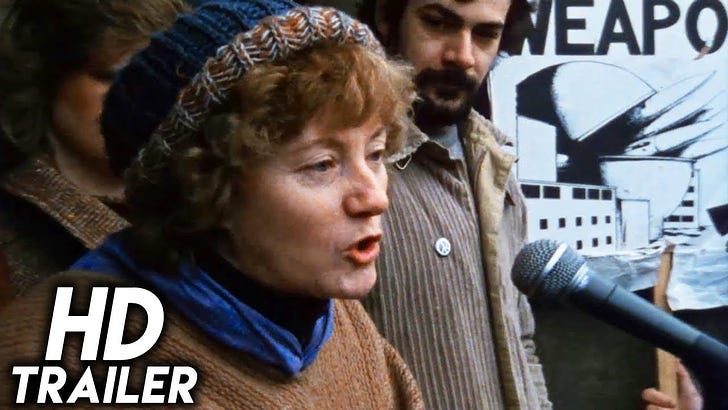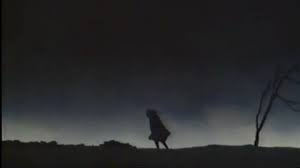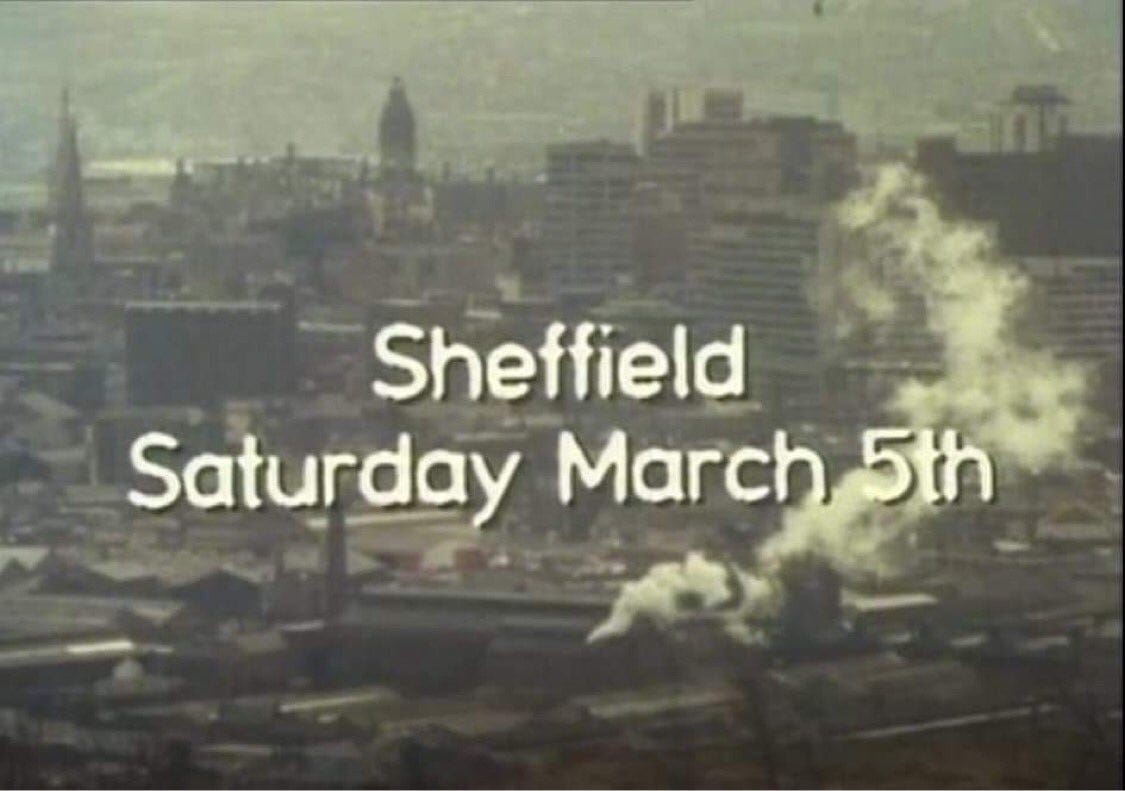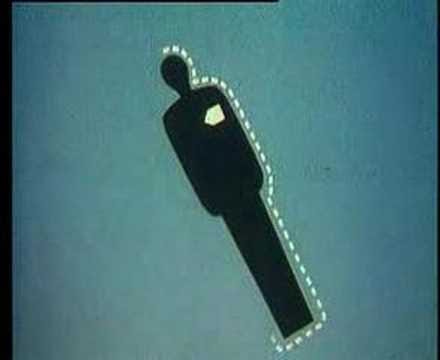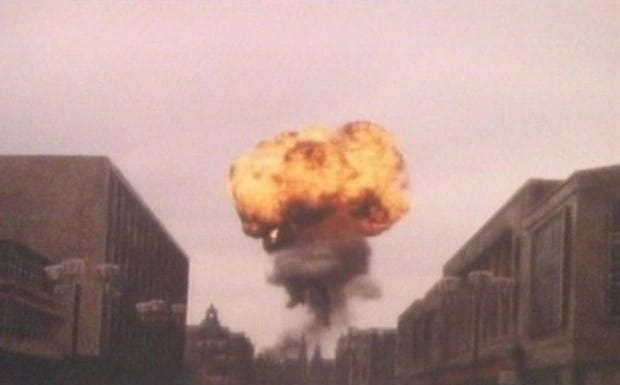"Abandon all hope ye who enter here"
Threads is the most brutal, disturbing and horrifying film ever made — because everything it shows could have happened, and still can happen.
The inscription on the Gate of Hell in Dante’s Inferno, in this post’s title, would be an apt epigraph for Threads, a grim cinematic representation of thermonuclear war and its effects. This television film, produced by BBC and premiered in 1984, shows us a world where all hope is lost. There is no redeeming character arc, no emotional reencounter between friends or relatives, not a single glimmer of a better future — or at least one that is not worse than the present. It’s raw, brutal, and unforgiving.
Writer Barry Hines and director Mick Jackson pulled no punches in this unrelenting example of British kitchen sink realism. As Jackson said, “We couldn’t hold back, because to do so would have been to not tell the truth. People had to see it.” What people saw, beyond the escalation towards a full-on nuclear war, was the horrible aftermath, many years of increasing misery and hopelessness.
The effects of nuclear winter were shown on film for the first time. The first studies on this hypothetical phenomenon had just been published, and if someday their models prove correct, Threads may be the closest anticipation to reality. But this is the kind of hypothesis that should never be put to test.
Common people
The film depicts common people going about their daily routines in Sheffield, during the bleak Thatcher years. The unremarkable (and some times not very likeable) characters speak and act like real persons, which enhances the realism. Hines does a great job as scriptwriter.
We begin by following Jimmy (Reece Dinsdale) and Ruth (Karen Meagher), boyfriend and girlfriend faced with an unexpected pregnancy, who decide to marry. Jimmy’s family is working-class, Ruth’s is middle-class, but British classism doesn’t rear its ugly head. They get along well enough.
Another key character is Clive Sutton (Harry Beety), a local government chief in charge of emergency measures. He is a true personification of the “Keep Calm and Carry On” spirit — up to a point.
Cold facts
Everyday life goes on as usual, except for the looming prospect of a serious international crisis. In the beginning we only have snippets of news on TV, newspapers and radio, to which most people are relatively indifferent. As the crisis between the USSR and USA escalates in Iran (it could be any other place), they get more and more concerned and, later, alarmed.
And the same happens to the audience. From time to time we see telex-like messages typed on a blue screen. They give us general economic, political and military data — like priority targets or destructive power — and, later, coldly tell us about estimated number of deaths (by the millions), effects of radiation, nuclear winter and the total collapse of civilization.
The thin line
The sense of dread is compounded by the ominous videos from Protect and Survive, a public service campaign with advice on how to act in the case of a nuclear attack — including detailed descriptions of how to dispose of corpses. A matter-of-factly, monotone voice explains what to do in a wonderful (so to speak) example of British understatement (as also happens with the radio alerts).
If all this wasn’t depressing enough, there is no soundtrack. Harrowing sound effects, brilliantly designed, convey fear and despair in a way that would be lost with music. There are no “famous last words” either. People, including babies, children and the elderly, as well as pets, die like flies, abruptly — and the camera doesn’t shy from their charred or rotten remains.
But more than anything, what Threads shows us, and makes us painfully aware of, is that there’s a thin line between everyday life and utter chaos. This is clearly put in the opening monologue:
“In an urban society, everything connects. Each person's needs are fed by the skills of many others. Our lives are woven together in a fabric, but the connections that make society strong also make it vulnerable.”
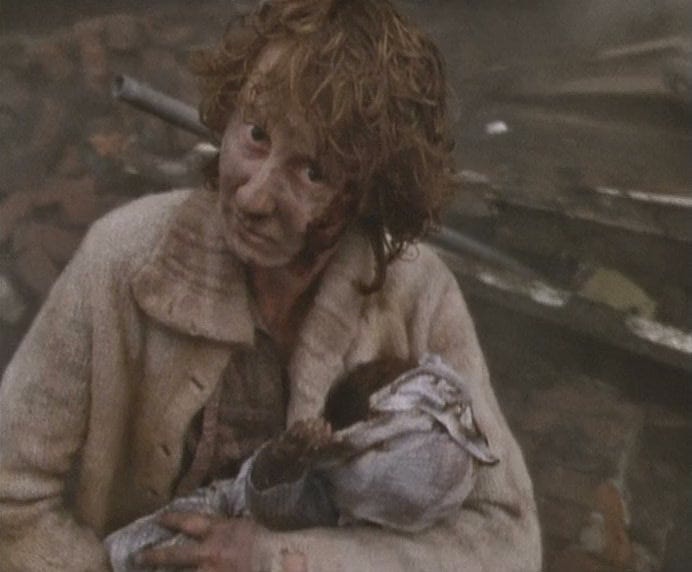
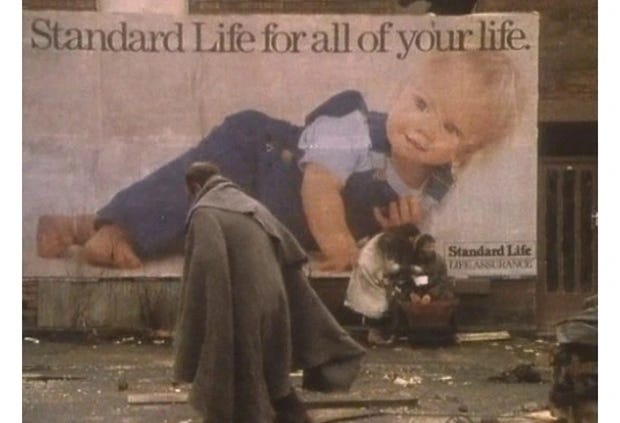
“You cannot win”
The connections break up pretty soon after the attack, and we stay with Ruth most of the time, almost until the very end. Her wanderings through a waste land, for many years, are the main focus of the story after all hell breaks loose. And there are many, many very disturbing scenes. But don’t expect me to give any details about what happens. You’ll have to watch it. No major spoilers here.
Threads is, on the one hand, a product of its era. There was a very real possibility of nuclear war in the 80s (ironically, just before the Cold War ended). And antiwar demonstrations were common. We briefly see two of them, disrupted by warmongers and the security forces. One of the speakers says something that will be with us for the rest of the film: “You cannot win a nuclear war”.
But on the other hand, the film transcends its time. As long as there are nuclear weapons — and there are still too many —, Threads will be relevant. Director Mick Jackson made a point of being as scientifically accurate as possible, and the months of research paid off.
The film is also a cinematic achievement. With a small budget, and shot in just seventeen days, Threads is nevertheless much more accomplished than its American counterpart, The Day After (big budget and a well-known cast). As Jackson recalls, the third degree burns had to be made with ketchup and Rice Krispies. They ended up being pretty convincing.
The stuff of nightmares
On September 23, 1984, the film’s premiere on BBC was a national event. It became known as "the night the country didn't sleep" such was the shock it intentionally caused on the audience. The film was followed by a Newsnight special with a debate about nuclear war that lasted one hour.
Threads was deemed so disturbing that it was only broadcasted one more time. But copies recorded by teachers from TV found their way to classroom viewings and discussions throughout the country. Many people still remember how scared they got as teenage students — some of them having nightmares for years.
The American premiere happened in 1985, in the WTBS cable channel. The owner, Ted Turner (of CNN fame) paid for the airtime himself, and introduced the film. It was a success, but only recently Threads started getting a bigger audience worldwide on streaming services like Amazon Prime. A remastered version on DVD and BlueRay also helps. Now there is no excuse for not watching it — while you can.
Director Mick Jackson and actress Karen Meagher talk about the film.
Threads compared to other films and a novel.
Three scenes from the film were recreated in Threads: Redux, in 2018.
How Sheffielders reacted to Threads.

